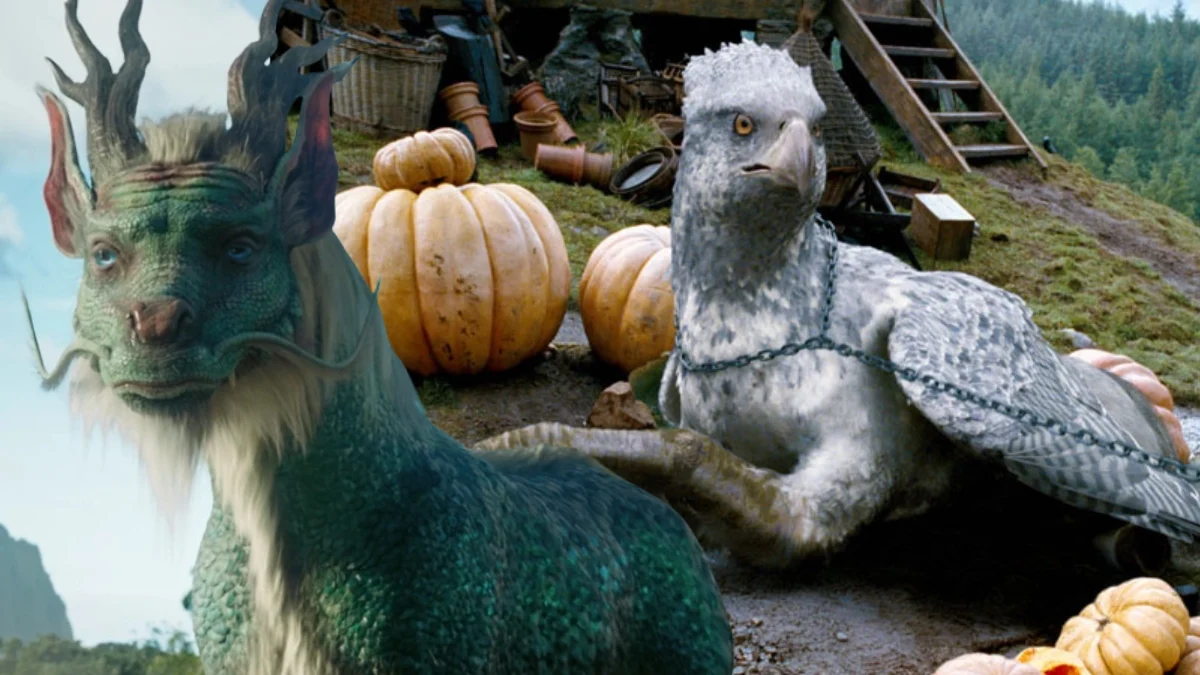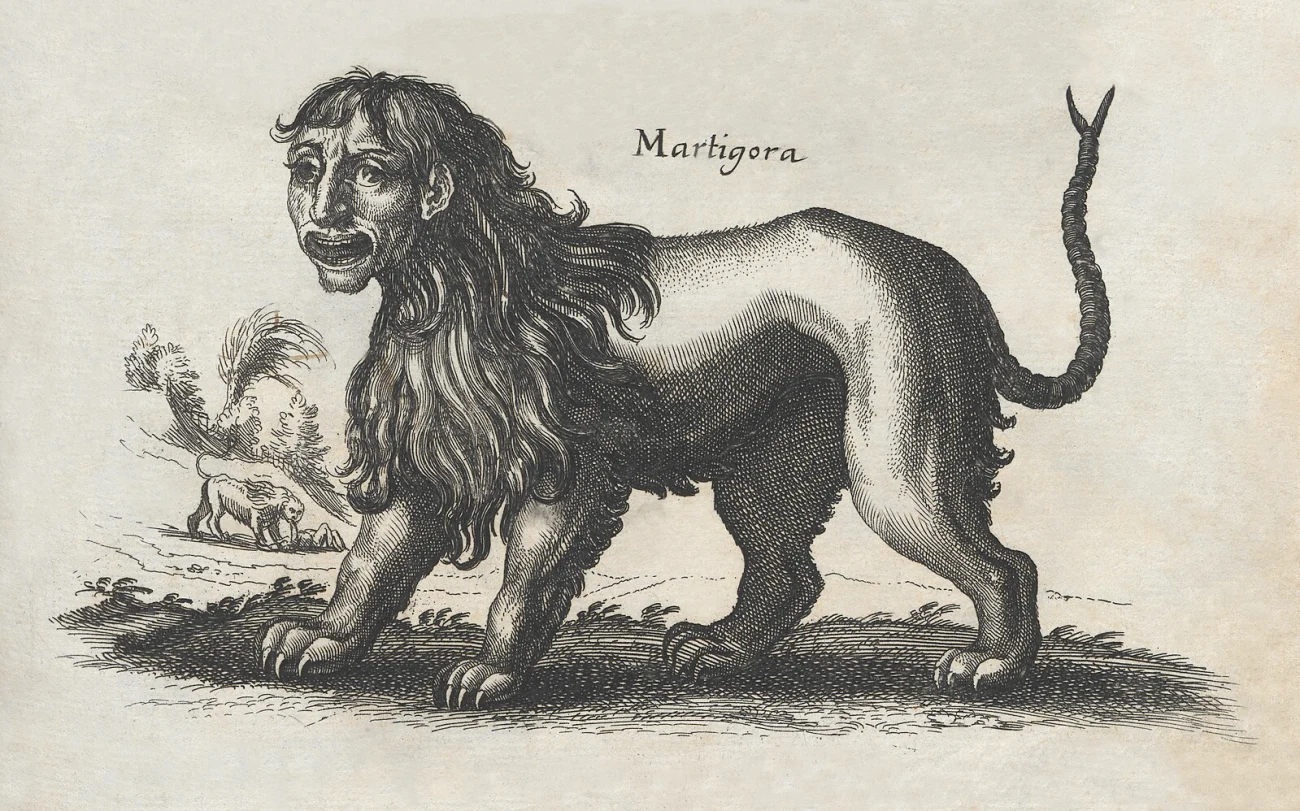
Throughout history, cultures worldwide have imagined incredible creatures – combinations of humans, animals, and fantastical beings. These hybrids weren’t just stories; they served purposes, like protecting important places, challenging brave characters, or helping people understand the mysteries of the world. Often, these creatures warned against things like excessive pride, being overly curious, or crossing boundaries. Their combined forms represented complex ideas – a mix of danger and knowledge, strength and forbidden power. Here are fifteen fascinating examples, with a brief look at their origins and significance.
Chimera

In Greek myth, the Chimera was a fearsome creature with the body of a lion, a goat’s head sprouting from its back, and a serpent as a tail. Born to the monsters Typhon and Echidna, it wreaked havoc on Lycia until the hero Bellerophon slew it. While artwork varied – sometimes showing the goat head higher on its back, and emphasizing the snake tail – the Chimera was always a combination of three beasts. Over time, the creature became a symbol for something impossible or unreal, likely because of its strange, patchwork appearance.
Manticore

The Manticore, a creature from ancient Persian stories, is usually described as having a human face, a lion’s body, and a tail covered in poisonous spikes or a scorpion’s stinger. Old writings say it could even shoot these spikes like arrows, making it a threat from far away. Its name probably comes from a word meaning “man-eater,” which suits its reputation for being incredibly hungry. In medieval illustrated books, the Manticore was used as a symbol of the dangers found in wild places and how little control humans truly have over nature.
Sphinx

The Egyptian Sphinx is a fascinating creature with the head of a human and the body of a lion, representing the strength and protective nature of royalty. In Greek mythology, there’s also the Sphinx of Thebes, known for posing riddles. This Greek Sphinx guarded the road and killed anyone who couldn’t solve its puzzle—until Oedipus came along. While Egyptian sphinxes typically stand guard at temples or along important pathways, emphasizing watchfulness over aggression, both types of sphinx—Egyptian and Greek—represent a powerful combination of intelligence and strength, often found at the entrances to sacred places.
Minotaur

The Minotaur, a creature with the body of a man and the head of a bull, lived deep within the Labyrinth on Crete, a complex maze built by the skilled craftsman Daedalus. Legend says the Minotaur was connected to King Minos and a sacred bull, and it was fed human sacrifices until the hero Theseus slew it. The Labyrinth’s confusing layout reflects the Minotaur’s own nature – a being caught between two worlds, hidden from view. Archaeologists studying ancient Crete have often linked the myth to depictions of bull-leaping and the island’s elaborate palace structures.
Harpy

Ancient Greek stories describe Harpies as spirits of the wind, with the bodies of birds and the faces of women. They were known for suddenly snatching away people or food. One famous tale tells of them tormenting the prophet Phineus by stealing or spoiling his meals until the Boreads – winged sons of the north wind – drove them away. Over time, Harpies were often portrayed as more frightening creatures with sharp claws, though they always retained the combination of bird and woman. They were often used to explain sudden, powerful winds and the quickness with which the gods could punish wrongdoing.
Siren

In ancient Greek stories, Sirens were creatures with the bodies of women and the wings and legs of birds. They lived on rocky shores and used beautiful songs to attract sailors. Unlike later depictions, early artwork shows them with wings and bird legs, not fish tails like mermaids. Their power wasn’t about physical force, but about their knowledge – they promised to share secret truths through their enchanting music. While they became associated with mermaids over time, the original stories always emphasized their bird-like qualities.
Mermaid

Mermaids – creatures with the bodies of fish and the upper bodies of humans – appear in myths and legends around the world, from ancient stories of the Near East to more recent European folklore. These tales vary, ranging from mermaids offering helpful advice to tragic love stories, but they often highlight the mysterious area where the sea meets the land. Stories from sailors, sightings of unusual sea creatures, and local coastal warnings all contributed to the enduring myth of the mermaid. Their half-human, half-fish form represents both the captivating beauty and potential dangers hidden within the ocean’s depths.
Lamassu

Lamassu were powerful protective spirits in ancient Assyria and Babylonia, often depicted with a human head and the body of either a bull or a lion, along with large wings. These impressive statues guarded palace entrances, representing a combination of intelligence, strength, and swiftness. Inscriptions show they were connected to the king’s power and were believed to offer divine protection. Their unique mix of human and animal features symbolized a complete and powerful being – wisdom, strength, and the ability to move freely between heaven and earth.
Hippogriff

The Hippogriff, a creature from medieval and Renaissance stories, combines the front of a griffin (a mix of eagle and lion) with the back of a horse. This unusual combination – eagles and horses were historically seen as enemies – came to represent the impossible becoming reality. In later stories, the Hippogriff is often portrayed as a magical, fast mount used for journeys across different worlds. Its complex, layered nature shows how European preferences developed towards increasingly elaborate and fantastical hybrid creatures.
Cockatrice

As a folklore enthusiast, I’ve always been fascinated by the Cockatrice! It’s this terrifying mix of snake and rooster, and legend says just looking at it could kill you, or even its breath! The really strange part is how it’s supposed to be born – a rooster’s egg, but hatched by a toad or serpent, which was seen as totally backwards and a really bad sign. Apparently, medieval people thought weasels or the sound of a rooster crowing could protect you from it. To me, the Cockatrice really represents those old fears about things being born wrong or becoming corrupted – it’s a pretty creepy creature when you think about it!
Hippocampus

In Greek mythology, the Hippocampus is a creature with the front half of a horse and the tail of a fish. It was believed to pull the chariot of the sea god Poseidon. Ancient artists frequently depicted Hippocamps on pottery, mosaics, and sculptures to enhance scenes of the sea and its gods. The creature perfectly embodies the idea of a “sea-horse” by combining horse and fish characteristics. Hippocamps are often shown alongside tritons and sea nymphs, creating a harmonious and fantastical underwater world.
Qilin

In Chinese stories, the Qilin is a mythical creature with the body of a deer, covered in scales, and possessing a tail like an ox. It’s often depicted with split hooves and a single horn. The Qilin is considered a lucky sign, appearing with the birth or reign of wise and kind leaders. Though it looks powerful, it’s believed to be incredibly gentle, careful not to harm any living thing. Its unusual mix of features represents balance and goodness, not something frightening.
Nue

According to Japanese folklore, the Nue is a strange creature with the head of a monkey, the body of a raccoon dog (tanuki), tiger legs, and a snake for a tail – and it sounds like a water bird when it cries. The famous ‘Tale of the Heike’ tells how a Nue troubled the imperial court until the skilled archer Minamoto no Yorimasa killed it. Its unusual, mismatched body parts symbolize its connection to sickness and chaos. Over time, stories about the Nue have continued, often changing the details to fit local areas, but always keeping its unique, combined form.
Buraq

In Islamic stories, the Buraq is a magnificent, winged horse-like creature, sometimes said to have a human face, that carried the Prophet Muhammad on a special night journey. While details differ, it’s consistently described as incredibly fast and brilliantly beautiful. Its unique combination of features suggests it’s a fitting mount for traveling between the world and heaven. Artists have depicted the Buraq in different ways depending on local traditions, but it always represents a vehicle of divine revelation.
Tikbalang

In Philippine folklore, the Tikbalang is a creature with the body of a human and the head and hooves of a horse. It’s known for mischievously leading travelers astray, often appearing at forest crossroads and on mountain paths where it can confuse people or play tricks on them. Traditionally, people protect themselves from the Tikbalang by using charms or even wearing their shirts inside out. This creature’s unusual form—a mix of human and animal—symbolizes the boundary between settled communities and the wild, untamed wilderness.
Share your favorite strange hybrid—or one we missed—in the comments!
Read More
- Bitcoin’s Ballet: Will the Bull Pirouette or Stumble? 💃🐂
- Can the Stock Market Defy Logic and Achieve a Third Consecutive 20% Gain?
- Dogecoin’s Big Yawn: Musk’s X Money Launch Leaves Market Unimpressed 🐕💸
- Deepfake Drama Alert: Crypto’s New Nemesis Is Your AI Twin! 🧠💸
- LINK’s Tumble: A Tale of Woe, Wraiths, and Wrapped Assets 🌉💸
- SentinelOne’s Sisyphean Siege: A Study in Cybersecurity Hubris
- XRP’s Soul in Turmoil: A Frolic Through Doom & Gloom 😏📉
- Binance’s $5M Bounty: Snitch or Be Scammed! 😈💰
- Ethereum’s $140M Buy: Will It Save Us? 😱
- ADA: 20% Drop or 50% Rally? 🚀💸 #CryptoCrisisComedy
2025-10-21 18:17